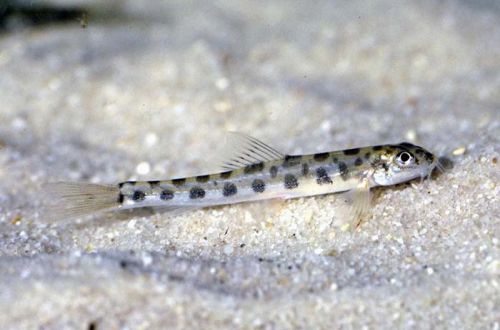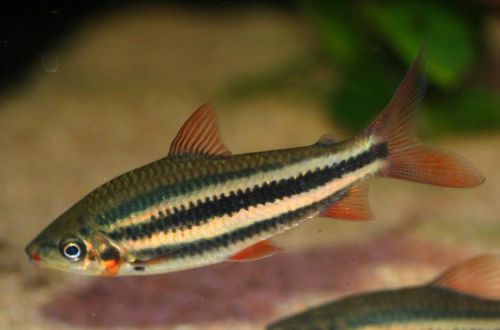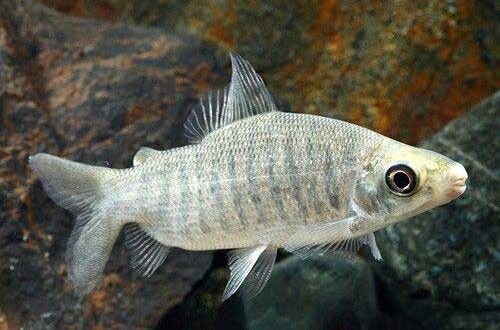
Cockerel Mahachai
Cockerel Mahachai or Betta Mahachai, scientific name Betta mahachaiensis, belongs to the Osphronemidae family. A rare Betta that can live in brackish water. Relatively difficult to care for, and habitat features will add to the difficulty in finding compatible species.

Contents
Habitat
It comes from Southeast Asia from the territory of Thailand. The natural habitat is limited to the outskirts of Bangkok – the lower reaches of numerous rivers flowing into the Gulf of Thailand. Most habitats are in close proximity to the metropolitan area and are highly impacted. Due to pollution, this species has completely disappeared in most places where it was previously found. Inhabits estuaries, brackish coastal swamps overgrown with Nypa fruticans mangrove palms. Among the dense network of roots, the fish find shelter and food.
Brief information:
- The volume of the aquarium – from 40 liters.
- Temperature – 22-28°C
- Value pH — 7.0–8.5
- Water hardness – 5–21 dGH
- Substrate type – any dark
- Lighting – subdued
- Brackish water – no
- Water movement – little or no
- The size of the fish is 5–6 cm.
- Food – any food
- Temperament – peaceful
- Content – in a pair, a group of relatives and together with other species
Description
Adult individuals reach a length of 5–6 cm. Sex differences are pronounced. Males are larger, the color is dark with turquoise speckles on the scales and strokes on the fins and tail. Females are smaller, gray in color. Populations from different localities have slight morphological differences, for example, the shape of the caudal fin can vary from round to ovoid.
Food
In nature, it feeds on insects and other small invertebrates/zooplankton. Acclimatized fish will usually start accepting dry foods as soon as they are considered edible. In the daily diet, the emphasis should be on a protein diet, consisting mainly of frozen and live foods (brine shrimp, daphnia, bloodworms, etc.) and feed based on them.
Maintenance and care, arrangement of the aquarium
The optimal size of the aquarium for one pair of fish starts from 40 liters. The design should form shaded areas with a large amount of surface vegetation in the form of tall stem or floating plants. And also provide a few hiding places, for example, in the form of natural snags or decorative items. If the design is not of great importance, then ordinary ceramic pots turned over on their side, fragments of PVC pipes, etc. will do.
Cockerel Mahachai is able to live in both fresh and brackish water with a salt concentration of 5-10 grams. per litre. Unlike most other Betta fish that live in acidic soft water, this species needs high hydrochemical values (pH / dGH).
The key to successful maintenance is a stable aquatic environment. The desired stability is achieved through regular maintenance of the aquarium and the smooth operation of the equipment, especially the filtration system.
Behavior and Compatibility
There is rivalry between males for position in the intraspecific hierarchy, sometimes leading to skirmishes, so in a small aquarium it is recommended to maintain a group with one male and one or more females. The latter, in turn, are not inclined to any kind of competition. Peacefully tuned in relation to other species. Due to their modest size, they can only be combined with small fish that can live in similar conditions.
Breeding / breeding
With the onset of the breeding season, the male proceeds to build a nest, which is a cluster of sticky bubbles on the surface of the water in the corner of the aquarium or near a floating leaf. When the construction is completed, courtship begins with the formation of a temporary pair. During spawning, the male and female cling to each other, wrapping their bodies around each other, at the moment of culmination, eggs are released and immediately fertilized. Each egg is carefully placed in its own bubble in the nest. The female swims away, and the male remains to guard the masonry. The incubation period lasts 24-48 hours, the fry that appear remain in the nest for another 3-4 days. When they begin to swim on their own, the male loses interest in them.
Fish diseases
The cause of most diseases is unsuitable conditions of detention. A stable habitat will be the key to successful keeping. In the event of symptoms of the disease, first of all, the quality of the water should be checked and, if deviations are found, measures should be taken to correct the situation. If symptoms persist or even worsen, medical treatment will be required. Read more about symptoms and treatments in the Aquarium Fish Diseases section.





